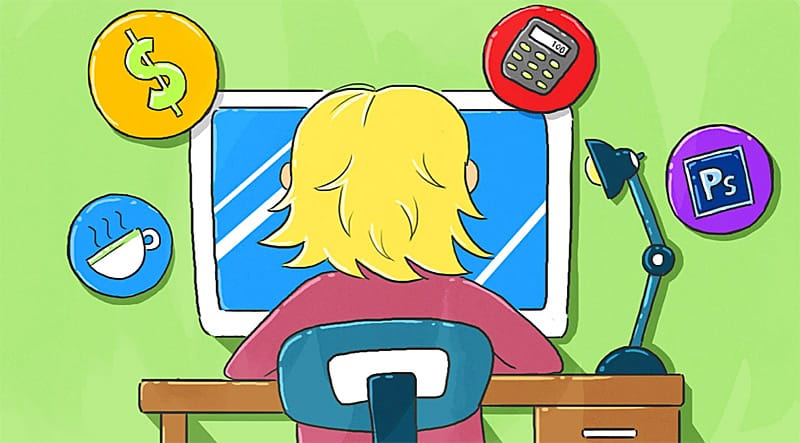6 Helpful Dos and Don’ts of Managing Freelance Graphic Designers
It is an undeniable fact that freelance work in the highly competitive graphic design industry is in high demand globally. With the number of freelance graphic designers on the rise, working with geographically distributed professionals can become very challenging. As opposed to full time permanent workers, keeping up with freelancers online is an entirely different story.
Managing freelance graphic designers is really no different. Creative processes aimed at producing original work require time. Good design does not simply appear out of thin air and takes a lot of effort, brainstorming and background planning. Not to mention a lot of ‘back and forth’ before the final product actually sees the light of day.
It all boils down to how good you are at basic time management, leadership skills, people management, creative ideation and execution. If you, as a manager, have mastered these skills then you won’t find coordinating with graphic designers cumbersome.
6 Dos and Don’ts of Managing Freelance Graphic Designers
However, there are a few wise project management tactics which you can effectively use and steer clear of the big challenges associated with managing freelance graphic designers.
Extent of Control

Since you’re the one managing them, make sure to set the limit of control that is neither free range nor overly stifling.
Designers are creative souls. It’s best to tread carefully when it comes to their sense of freedom and space with the kind of work they are doing. Once they feel they are being pushed and being micromanaged, chances are they will balk and digress from delivering creative work of high quality.
This usually happens when you lose faith in the capabilities of the designer and feel the need to take control. When things seem to go downhill; stop, take a step back and breathe. Talk to the designer with as much clarity as possible and share examples with visuals to bridge the gap between your expectation and the creative outcome.
Sharing Creative Feedback

The brain of the creative folk is wired differently than the rest of us. They may feel quite strongly about their work. It is advised to be tactful when conveying feedback. The criticism should be centered on the work. Whatever the feedback, always share it in a positive manner. Share your criticism and suggestions with them as and when you think is necessary.
The most important thing is to not be vague about the feedback. Saying things such as ‘the wow factor is missing’ or ‘I don’t like it’ does not help. Always be as specific as possible to convey what you’re looking for with references and examples.
It would do well to enlighten the designers about your design preferences before they begin working on your project. You can always provide feedback specific to the major components of graphic design. The five components of graphic design are color, fonts, images, layout and design aesthetic.
You can comment on each of these components separately to make it easy for the designer to understand and fulfil your design requirements.
Setting Time Frames & SMART Project Goals
It is crucial to communicate the time frames to the designers clearly. From the initial draft to the final version, all timelines must contain activity based breakdown. Using a project management tool might help a great deal with deadlines.
For goal setting, you can always use the SMART system.
- Specific: Outline and explain the task at hand with as much clarity as possible. The requirements should be crystal clear to the designers.
- Measurable: You can always track the real progress vs the planned progress. Measuring outcomes becomes much easier this way.
- Attainable: The goals should be realistic but not too underwhelming. Creating a balance between the two is sometimes a feat.
- Relevant: It should be relevant to what was required from the outset and suitable to the skills of your team of graphic designers.
- Time-bound: Every project needs to have an explicitly spelled out deadline. The tasks at hand should not carry on for ages surpassing the time limit. It will result in a waste of time, money and resources. For this purpose, several time tracking tools are available in the market that could help. Personal favorites include Minterapp, Toggl and Time Camp.
To be on the safe side, consider padding the timeline so that you have a time ‘buffer’ in case of unforeseen circumstances.
The Right Kind of Design Brief
The creative brief should not be lacking cohesion and precision. Designers should understand the problem which their creativity needs to address. A strong creative brief lists all the do’s and don’ts relevant to the project such as objectives, timelines, budget, creative constraints etc.
Freelancers are specialists in their area of expertise. They do not need to be led. Instead of trying to educate them about how to do a task, they just need to be told what exactly the task entails and any milestones that may apply.
Organization and Delegation of Core Tasks
It would become ten times easier if you create and follow a steady workflow. You may be the manager, but don’t rely on yourself to do the major chunk of the work. Delegate certain tasks to the ones who have the skills required to complete work.
Managing Motivation
As mentioned above, most freelancers are experts in their field and willingly choose to freelance. In this case, they are highly self-motivated individuals. They do not need to be constantly pressured all the time but a gentle nudge now and then will be sufficient. They get a sense of fulfilment out of their work. Most of the time, completion of their work and appreciation is what keeps them motivated.
Freelance graphic designers choose to become freelancers for a myriad of reasons. The most common reasons cited are the preference for flexible work hours, to gain more creative control over their projects or to start a business for themselves.
When it comes to designing, it’s subjective. It requires a collaborative spirit combined with excellent communication skills, tolerance and a pragmatic approach to expectations. The points mentioned above will help you manage your team more efficiently.



